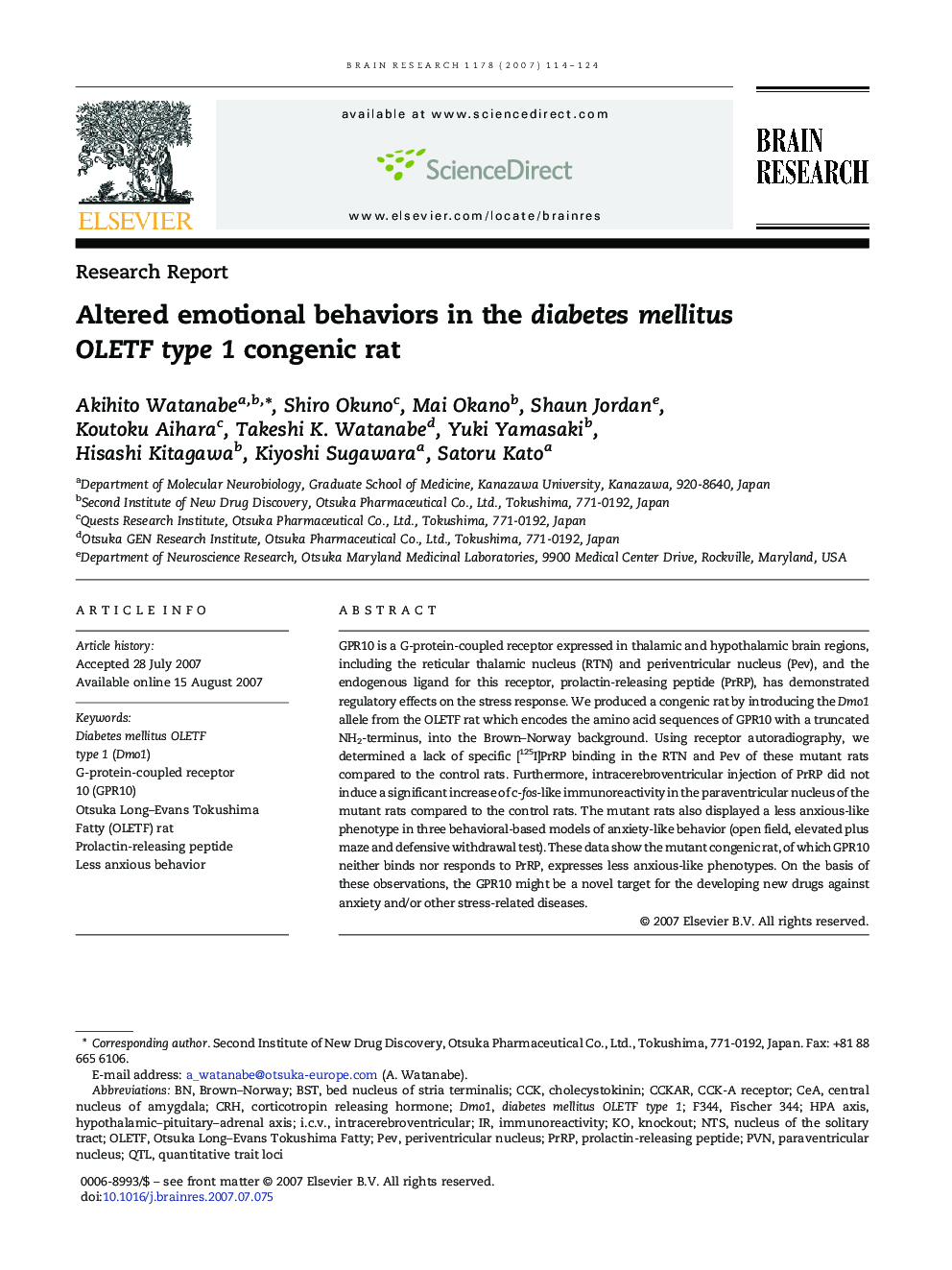| Article ID | Journal | Published Year | Pages | File Type |
|---|---|---|---|---|
| 4330494 | Brain Research | 2007 | 11 Pages |
GPR10 is a G-protein-coupled receptor expressed in thalamic and hypothalamic brain regions, including the reticular thalamic nucleus (RTN) and periventricular nucleus (Pev), and the endogenous ligand for this receptor, prolactin-releasing peptide (PrRP), has demonstrated regulatory effects on the stress response. We produced a congenic rat by introducing the Dmo1 allele from the OLETF rat which encodes the amino acid sequences of GPR10 with a truncated NH2-terminus, into the Brown–Norway background. Using receptor autoradiography, we determined a lack of specific [125I]PrRP binding in the RTN and Pev of these mutant rats compared to the control rats. Furthermore, intracerebroventricular injection of PrRP did not induce a significant increase of c-fos-like immunoreactivity in the paraventricular nucleus of the mutant rats compared to the control rats. The mutant rats also displayed a less anxious-like phenotype in three behavioral-based models of anxiety-like behavior (open field, elevated plus maze and defensive withdrawal test). These data show the mutant congenic rat, of which GPR10 neither binds nor responds to PrRP, expresses less anxious-like phenotypes. On the basis of these observations, the GPR10 might be a novel target for the developing new drugs against anxiety and/or other stress-related diseases.
